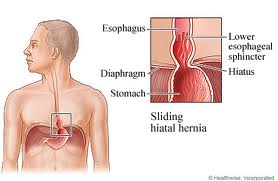Many of us are still not fully aware what this item is ..... and how serious it could be, if left unattended without proper medical attention.
When we goes for our health examination by the laboratory, this item is often included and it will be measured from the urine. When the level is too high, it would mean that the kidneys' function is facing problem and should the problem becomes critical, ones may even need to undergo renal dialysis to resolve it. Creatine is stored mostly in our muscles' system and when, ones goes for vigorous exercises, this item will be flushed out. Of course, the level measured for man is higher than the level for woman ... because the former has more muscles in their body.
As MedicineNet.Com explains .........
Creatinine is a chemical waste molecule that is generated from muscle metabolism. Creatinine is produced from creatine, a molecule of major importance for energy production in muscles. Approximately 2% of the body's creatine is converted to creatinine every day. Creatinine is transported through the bloodstream to the kidneys. The kidneys filter out most of the creatinine and dispose of it in the urine.
Because the muscle mass in the body is relatively constant from day to day, the creatinine level in the blood normally remains essentially unchanged on a daily basis.
Why is it important to check blood Creatinine levels ?
The kidneys maintain the blood creatinine in a normal range. Creatinine has been found to be a fairly reliable indicator of kidney function.As the kidneys become impaired for any reason, the creatinine level in the blood will rise due to poor clearance by the kidneys. Abnormally high levels of creatinine thus warn of possible malfunction or failure of the kidneys. It is for this reason that standard blood tests routinely check the amount of creatinine in the blood. A more precise measure of the kidney function can be estimated by calculating how much creatinine is cleared from the body by the kidneys and it is referred to creatinine clearance.
What are "normal" blood creatinine levels ?
Normal levels of creatinine in the blood are approximately 0.6 to 1.2 milligrams (mg) per deciliter (dl) in adult males and 0.5 to 1.1 milligrams per deciliter in adult females.Muscular young or middle-aged adults may have more creatinine in their blood than the norm for the general population. Elderly persons, on the other hand, may have less creatinine in their blood than the norm. Infants have normal levels of about 0.2 or more, depending on their muscle development. In people with malnutrition, severe weight loss, and long standing illnesses the muscle mass tends to diminish over time and, therefore, their creatinine level may be lower than expected for their age.
A person with only one kidney may have a normal level of about 1.8 or 1.9. Creatinine levels that reach 2.0 or more in babies and 10.0 or more in adults may indicate severe kidney impairment and the need for a dialysis machine to remove wastes from the blood.
What are the reasons for elevated blood creatinine ?
Any condition that impairs the function of the kidneys will probably raise the creatinine level in the blood. It is important to recognize whether the process leading to kidney dysfunction (kidney failure, azotemia) is longstanding or recent.The most common causes of longstanding kidney disease in adults are high blood pressure and diabetes mellitus. Certain drugs can sometimes cause abnormally elevated creatinine levels. Serum creatinine can also transiently rise after ingestion of large amount of dietary meat.
Are there any symptoms associated with elevated blood creatinine levels ?
The symptoms of kidney dysfunction (renal insufficiency) vary widely. Some people may have a incidental finding of severe kidney disease and elevated creatinine on routine blood work without having any symptoms at all. In others, depending on the cause of problem, many different symptoms may be present including :- feeling dehydrated,
- fatigue,
- shortness of breath, and
- confusion


















